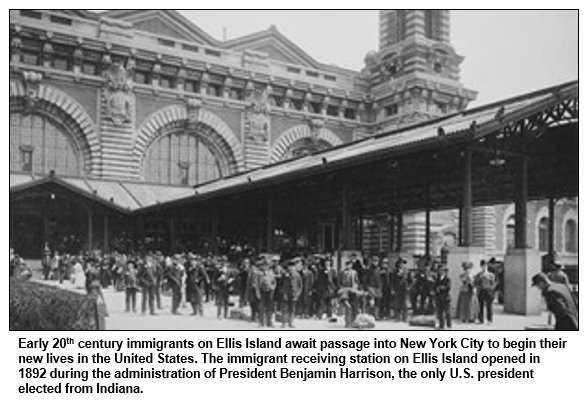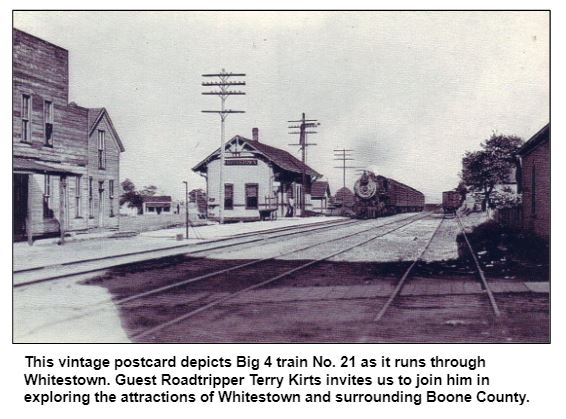
Saturdays, noon to 1 p.m. ET on WICR 88.7 FM.
Or stream audio live from anywhere on WICR Online!
You can listen to recent shows by clicking the podcast links below, or check out our extensive archive of past shows available as podcasts.
June 13, 2020
Ellis Island, immigration and Indiana: encore
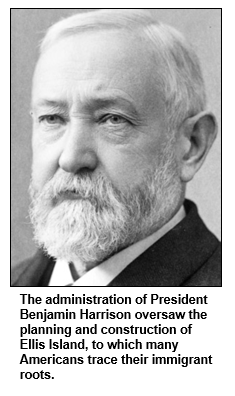
The receiving station for aspiring Americans now celebrated as an iconic aspect of our shared history opened on Ellis Island in 1892 during the administration of President Benjamin Harrison, so the only president elected from Indiana oversaw the lead-up to its debut. According to some estimates, about 22 million immigrants passed through Ellis Island during the years between 1892 and 1924, its peak period as the country's "door." (Ellis Island remained open as a receiving center until 1954, but during its final 30 years, limitations on immigration - and the creation of other points of entry - meant that far fewer immigrants were handled at the island.)
Not only will we explore the challenges that confronted all involved during the early Ellis Island years - immigrants often endured shockingly crude medical exams - we also will look at the waves of ethnic heritage groups that came to Indiana from the 1890s through the mid-1920s. Nelson's studio guests are:
- Jennifer Capps, the veteran curator at the Benjamin Harrison Presidential Site in Indianapolis. Because Ellis Island opened under the Harrison administration - he was elected president in 1888 and left office in early 1893 - Jennifer has researched several aspects of the planning for the major immigrant processing center. According to Ellis Island: Gateway to the American Dream (Barnes & Noble Books, 1998), "the federal government assumed responsibilities for immigration and built Ellis Island" after corruption scandals with its predecessor, Castle Garden, which was run by New York officials.
- And Teresa Baer, managing editor of the Indiana Historical Society Press. Teresa is the author of Indianapolis: A City of Immigrants (2012) and Finding Indiana Ancestors (2007), both published by the IHS Press; she also is the editor of The Hoosier Genealogists: Connections, the society's family history magazine.
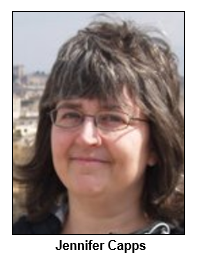
During our show, we will frame the early decades of immigration through Ellis Island by describing the waves of ethnic immigration to Indiana that preceded it, including early Irish, German, English and Scottish arrivals.
Between the 1890s and the start of World War I in 1914, many waves of immigrants came from what then was the Austro-Hungarian Empire; today, after more than a century of geopolitical shifts and cartographic reconfiguration, their countries of ancestral origin are the modern nations of Hungary, Austria, Ukraine, Belarus, Poland and Slovakia.
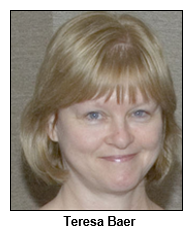
Italian immigration during the late 19th and early 20th centuries included hundreds of marble-cutters who settled in southern Indiana, including the town of Bedford, to work as limestone carvers. Hoosier History Live explored this aspect of Italian immigration in 2010. Other shows that explored immigration to Indiana during the heyday of Ellis Island include our programs about Latvian and Lithuanian heritage in 2016 and Russian immigration in 2014.
Our guest Jennifer Capps will share details about crude eye examinations - with unsterilized equipment - that were imposed on immigrants during the early decades of Ellis Island as a receiving station. Federal laws called for the rejection of those who showed indications of suffering from a "loathsome or contagious disease," but the reality was that many immigrants were turned away if they displayed any hint of illness or physical impairment, according to Ellis Island Interviews: In Their Own Words (Checkmark Books, 1997).
A fire at Ellis Island burned the first receiving station to the ground in June 1897, more than four years after Harrison's presidency ended. By then, more than 1.64 million immigrants had been processed. The fire destroyed immigrant records from 1855 to 1897, including those from Castle Garden. About 200 immigrants were on the island at the time of the inferno, but all were safely evacuated. Construction began immediately of new buildings made of materials deemed fireproof.
Some history facts:
- The first site proposed for the immigrant processing station was Bedloe Island (now called Liberty Island), where construction on the Statue of Liberty had been completed just a few years prior, in 1886. Because of public opposition to that proposal, nearby Ellis Island was chosen instead.
- The first official to climb to the top of the Statue of Liberty was Harrison's vice president, Levi P. Morton.
- As recently as 1997, more than 40 percent of the U.S. population could "trace their roots to an ancestor who came through Ellis Island," according to the Statue of Liberty - Ellis Island Foundation.
Roadtrip: Whitestown in Boone County
Guest Roadtripper Terry Kirts, IUPUI creative writing lecturer and Indianapolis Monthly contributing editor for food, invites us to visit Whitestown in Boone County, where the Big 4 Trail Linear Park runs along an abandoned rail line that once saw the passing of both the Lincoln inaugural train (1861) and the Lincoln funeral train (1865).
Established in 1851 about 22 miles northwest of downtown Indianapolis, the town took its name from Albert S. White, the president of the railroad that originally operated through Whitestown; White also served as U.S. Senator (1839-1845) and was a leading abolitionist in the mid-1800s.
In recent years, Whitestown has been one of Indiana's fastest growing municipalities. While much of the development that has nearly doubled the town's population in the last few years has been new construction, a movement to resurrect historic properties is gaining momentum. A prime example is Moontown Brewing Company; it opened in the spring of 2018 after a major renovation of the vacant 10,000-square foot Whitestown High School, which served the town's students from 1914 to 1963. Prominently featured is the former basketball court, which houses much of the brewing operation and the tasting room. The brewery lobby features a display of many trophies and other memorabilia from the high school's heyday.
To hear more about Whitestown's attractions, be sure to listen to Terry's Roadtrip report!
History Mystery
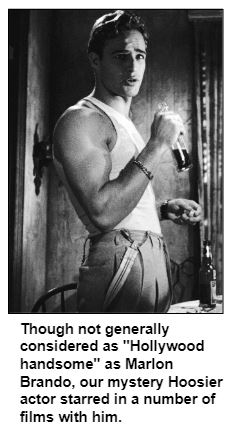
The future Oscar winner was born in Chicago in 1912, but his family moved to Gary when he was 5 years old and he always considered the Indiana city to be his hometown. His father was involved in Serbian theatrical productions in Gary, contributing to the son's love for performing.
He went on to be cast - usually as a supporting actor - in some of the best-remembered movies of the 1950s. Several of the films starred Marlon Brando, including the movie for which the actor raised in Indiana won an Academy Award.
During the 1970s, he starred as a police detective in a popular TV series.
Question: Who was the Hoosier actor?
Note: As this is an encore show, please do not call in with the answer.
By the way, if your organization would like to offer History Mystery prizes, email admin@hoosierhistorylive.org Good prizes are ideally vouchers or gift certificates that can be sent by postal service mail in a standard business envelope.
Nelson Price, host and historian
Molly Head, producer/general manager, (317) 927-9101
Mick Armbruster, associate producer
Cheryl Lamb, administrative manager
Richard Sullivan, senior tech consultant
Pam Fraizer, graphic designer
Garry Chilluffo, consultant
Please tell our sponsors that you appreciate their support!

 For organizational sponsorship, which includes logos, links, and voiced credits in the show and in podcasts, email support@hoosierhistorylive.org, or call (317) 927-9101 for information. Our podcast listens are increasing at a rate of 17% a month and we are being distributed on Indiana Memory and the National Digital Public Library. As we have always believed, the internet distribution of Hoosier History Live is taking us to the top! Thanks also to Visit Indy, Fraizer Designs, WICR-FM, Henri Pensis, Aaron Duvall, Kielynn Tally, Justin Clark, and many other individuals and organizations.
For organizational sponsorship, which includes logos, links, and voiced credits in the show and in podcasts, email support@hoosierhistorylive.org, or call (317) 927-9101 for information. Our podcast listens are increasing at a rate of 17% a month and we are being distributed on Indiana Memory and the National Digital Public Library. As we have always believed, the internet distribution of Hoosier History Live is taking us to the top! Thanks also to Visit Indy, Fraizer Designs, WICR-FM, Henri Pensis, Aaron Duvall, Kielynn Tally, Justin Clark, and many other individuals and organizations.
Thank you!
We'd like to thank the following recent, new and renewal contributors whose donations help make this show possible!
- Carl and Kathleen Widland
- Carol Bacon
- Rachel Perry
- Tom Swenson
- Dr. James Madison
- Stacia Gorge
- Dr. Geoffrey Golembiewski
- Clarke Kahlo
- Jim and Nancy Johnson
- Marion Wolen
- Robin Winston
- Peggy Hollingsworth
- Kathleen Angelone
- Jill Lough Chambers
- Jinsie Bingham
June 20, 2020 - coming up
A second serving of foods of the pioneers
The table was overloaded when Hoosier History Live served up a show on topics related to the foods of the pioneers earlier this year. So during this show, we will savor additional, fresh aspects of what and how Indiana residents ate during the 1820s, '30s and '40s.
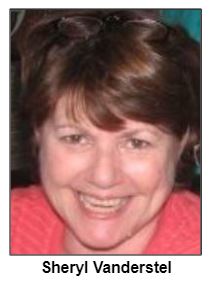
How was the corn grown in the pioneer era different from what's cultivated in Hoosier soil today?
Indianapolis-based food historian Sheryl Vanderstel will discuss those and other topics that we were not able to explore when she was our guest in April. In addition, Sheryl is planning to share insights about aspects of what she calls "food etiquette," of the pioneer era, customs ranging from "tableware to table settings, serving and meal manners."
"Table manners varied by social class and ethnic groups, just as they do today," she says.
Typically, every member of an Indiana pioneer household had a prescribed role in maintaining the family garden, Sheryl notes. In addition to vegetables and fruits, the gardens included herbs for cooking and medicinal use.
A native Hoosier whose ancestors were pioneers, Sheryl is a former assistant director of education at Conner Prairie Interactive History Park, where her duties included overseeing hearthside dinners and other food programs.
She has been involved in food programming at other historic sites and museums as well as educational seminars about historic foods. Sheryl is a board member of the Irvington Historical Society.
© 2020 Hoosier History Live. All rights reserved.
|
